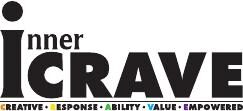Taking calculated risks is an essential part of every journey.
Addressing a risk can occasionally paralyze people to the point that they do nothing.
- Fear of change and the unknown limits us to discover new, exciting, and possibly even superior alternatives.
You need to evaluate all the options before you make your decision.
- Are you taking on an acceptable risk? If not, review what you want to achieve and then determine an alternate route that will get you there.
- The level of risk has a lot to do with the direction you take. Sometimes the path with the highest risk leads to the highest reward.
Consider this question: What do you currently consider impossible?
- It’s only impossible because you’ve limited your options.
- Think about it: Have you exhausted all the options both inside and outside of your comfort zone?
- And that’s where the calculating part comes in. Taking a risk doesn’t mean accepting every option that presents itself.
- You have to explore the unknown, remain open to opportunities, and not let fear hold you back.
People who don’t shy away from risk take us places we’ve not yet been.
- They see how it could be – not how it is.
- They’re willing to reach beyond everyday reality and into the unknown.
- That means not allowing ourselves to be limited by the social and emotional boundaries, opinions, beliefs, and self-imposed restrictions society establishes.
We must not fear fear, and we need not fear risk. It’s well worth it to step outside your comfort zone and make changes.
- It allows us to realize that life not only consists of changes, but also patterns
- Roads we’ve traveled before that are simply called by another name.
Re-source: Review
Risk takers frequently review goals and determining the various routes to get to the destination. Often they choose the path with the highest risk in order to gain the maximum reward. Many of them demonstrate the following characteristics:
- The ability to overcome the fear associated with the risk by evaluating potential pitfalls.
- Viewing the change that immobilizes others as simply another hurdle to overcome Risk takers don’t see how things are, but how they could be. They are willing to do whatever is necessary to achieve the desired goal
- A readiness to break free from social and emotional boundaries, opinions, beliefs, and restrictions imposed by business and society. Unaffected by the opinions of others, they freely and openly express their ideas.
- Adeptness at finding ways to hedge against risk to take advantage of the upside of a given situation.
- A readiness to assess whether the reward is worth the cost required to take on the risk. They willingly invest hors of personal time on a project while recognizing that it won’t necessarily be successful.
- An upbeat attitude that allows for potential losses and the refusal to be overwhelmed by the prospects.
- The courage to step out into uncharted waters to ensure that goals are achieved.
Everyone has a different comfort level in terms of risk – but no matter how much is involved, a positive attitude is essential for success.
- If doubts and fears overrule hope and optimism, success is much less likely to occur.
- Small achievements bolster confidence, which leads to a willingness to take bigger risks and accomplish greater goals.
The first step in becoming a skillful risk taker is to avoid the two greatest traps that lead to failure:
- Do not “ignore” the risk, or assume that you can’t do anything about it.
- It’s equally important not to intellectualize the risk to the point where you avoid taking action.
- This will only result in a failure to take ownership and the need to constantly rely upon others.
- Risk’s reward is never available to those who don’t even bother to step up to the plate.
Once you have opted to take a gamble, the next step is to diminish any sense of fear by supporting you decision with fact.
- You must accept the fact that failure is a possible worst-case outcome and then move ahead with enthusiasm and a positive attitude.
Keeping these two thoughts in mind allows the process of taking a risk to become a system of calculating the cost and the benefit before taking any action.
- Remember: Inside every risk is an opportunity for success.
craving and resource from “Surviving Your Serengeti” by Stefan Swanepoel

